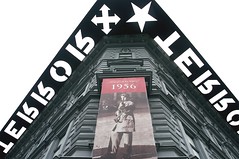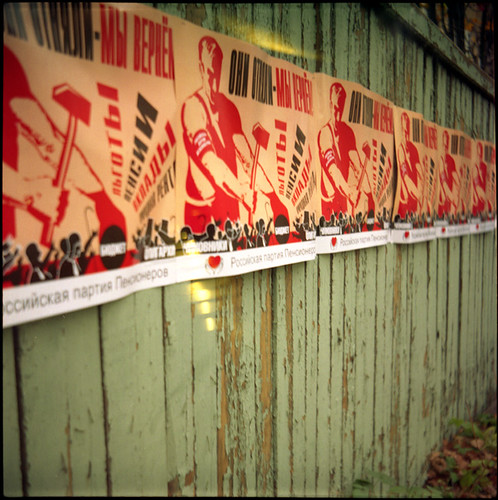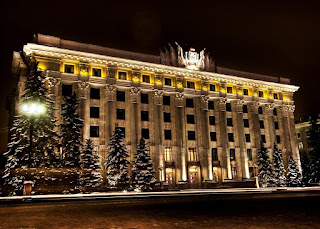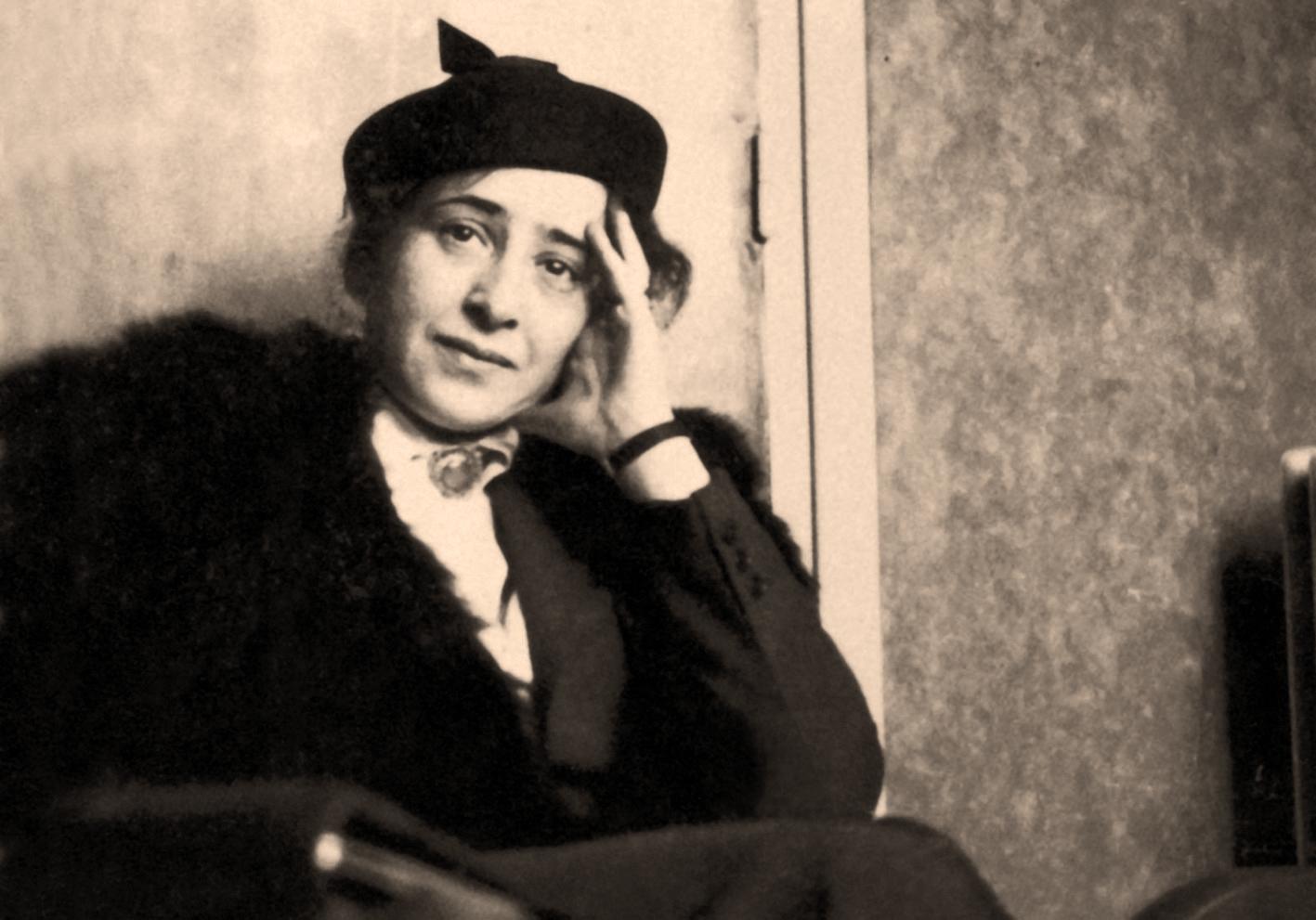 ...by a fellow Australian transplant from Europe. I always find it invigorating, energising and generally exciting -- I'm a nerd -- to come across a thinker clearly engaged in their project, passionate about articulating ideas/concepts and measured in their appraisal of 'the literature'. In this case, the cool blast of European wind comes from Johann P. Arnason, another academic -- like Agnes Heller -- who once found their antipodean place in the humanities department of La Trobe University.*
...by a fellow Australian transplant from Europe. I always find it invigorating, energising and generally exciting -- I'm a nerd -- to come across a thinker clearly engaged in their project, passionate about articulating ideas/concepts and measured in their appraisal of 'the literature'. In this case, the cool blast of European wind comes from Johann P. Arnason, another academic -- like Agnes Heller -- who once found their antipodean place in the humanities department of La Trobe University.*I had been vaguely aware of him before now. I've read some of his contributions to the debate about the theoretical viability of something called "Communist Modernity." He's edited and contributed a commanding breadth of material to the social theory journal Thesis Eleven, while a 2000 article by Wolfgang Knöbl in that journal ("In Praise of Philosophy: Johann P. Arnason's Long but Successful Journey Towards a Theory of Modernity") argues for Arnason as a social theorist of modernity, one worthy of challenges to Giddens, Castoriadis and Habermas. Arnason has written both philosophical and sociological works, ultimately weaving the two together in what has been described as "macro-sociology". It's his 1993 book, entitled The Future that Failed: Origins & Destinies of the Soviet Model, which has really interested me over recent days. It's one where the empiricism of the study meets philosophical acumen, a series of his own insights poking through the historical outline of both Soviet society and thinking around that society.
The blank library "due date" slip and pristine condition of the book I'm reading tell a story of neglect. As does the necessity to import the book via interlibrary loans, my home university library lacking its own copy.
 For all that, it fell into my possession at the correct time. I say this for two reasons. Firstly, with my own recent slow attempts at teasing out some conceptual distinctions, Arnason came along to clearly draw up some helpful lines of demarcation. The questions I was puzzling over are in the realm of differentiation and integration. A large part of the introductory chapter of The Future that Failed is dedicated to precisely this problematic, as I explore below. Secondly, he navigates between the work of Castoriadis and Dictatorship Over Needs (which is itself an often uncited deployment of Castoriadis' ideas), the very two frameworks which I've been seeing as increasingly likely to be those which will be guiding work in the relevant chapters of my thesis. He also introduces some names -- Touraine, for instance -- not commonly heard in these circles. And, on a rather more minor note, the very title of Arnason's book gets at the question of Communist historicity -- that emphasis on the future, the forever radiant golden horizon -- I argue is important to the notes of nostalgia recognisable in the post-communist remembrance of Communism.
For all that, it fell into my possession at the correct time. I say this for two reasons. Firstly, with my own recent slow attempts at teasing out some conceptual distinctions, Arnason came along to clearly draw up some helpful lines of demarcation. The questions I was puzzling over are in the realm of differentiation and integration. A large part of the introductory chapter of The Future that Failed is dedicated to precisely this problematic, as I explore below. Secondly, he navigates between the work of Castoriadis and Dictatorship Over Needs (which is itself an often uncited deployment of Castoriadis' ideas), the very two frameworks which I've been seeing as increasingly likely to be those which will be guiding work in the relevant chapters of my thesis. He also introduces some names -- Touraine, for instance -- not commonly heard in these circles. And, on a rather more minor note, the very title of Arnason's book gets at the question of Communist historicity -- that emphasis on the future, the forever radiant golden horizon -- I argue is important to the notes of nostalgia recognisable in the post-communist remembrance of Communism. So what does Arnason have to say? Well, if his 24 pages of survey can be distilled down further to a survey paragraph or nine, it would look something like this. Arnason is at pains to disentangle the Soviet model as a "social regime" from the movement which "rose to power in some states but failed to achieve its global aims." This, for him, is important because "the impact of the regime -- its built-in aspirations as well as its structural transformations -- on the movement which it controlled was more decisive than the traces left within the regime by the movement that had paved the way for it." This is the long view, obviously. Not localised to the time of the revolution, but Soviet Communism taken as a whole. While the study of the movement is important and the origins of the regime leave their mark, as he readily admits, the stress here is placed on the system of government and society developed by that regime. This is more useful for me as it tracks the regime through its various modulations, highlighting those relevant points of continuity. "The focus is, in other words, on the Soviet model as a social regime (in the broad sense suggested by Castoriadis, i.e. a comprehensive institutional pattern) with global ramifications and universal pretensions; its ability to absorb and instrumentalise the legacy of a social movement, as well as to control or at least influence a whole spectrum of movements outside its domestic arena, is only one aspect of a more complex picture, and not the most directly relevant to the present discussion."
So what does Arnason have to say? Well, if his 24 pages of survey can be distilled down further to a survey paragraph or nine, it would look something like this. Arnason is at pains to disentangle the Soviet model as a "social regime" from the movement which "rose to power in some states but failed to achieve its global aims." This, for him, is important because "the impact of the regime -- its built-in aspirations as well as its structural transformations -- on the movement which it controlled was more decisive than the traces left within the regime by the movement that had paved the way for it." This is the long view, obviously. Not localised to the time of the revolution, but Soviet Communism taken as a whole. While the study of the movement is important and the origins of the regime leave their mark, as he readily admits, the stress here is placed on the system of government and society developed by that regime. This is more useful for me as it tracks the regime through its various modulations, highlighting those relevant points of continuity. "The focus is, in other words, on the Soviet model as a social regime (in the broad sense suggested by Castoriadis, i.e. a comprehensive institutional pattern) with global ramifications and universal pretensions; its ability to absorb and instrumentalise the legacy of a social movement, as well as to control or at least influence a whole spectrum of movements outside its domestic arena, is only one aspect of a more complex picture, and not the most directly relevant to the present discussion."For Arnason, the Soviet regime is one laden with imperialist designs, which I spell out more below. Of most interest to me is his argument about the matters of integration and differentiation.
"Differentiation" here refers to those attempts at distinguishing the social field. Perhaps the most common of these is the tripartite formula which splits into economic, political and cultural components. This is the one Arnason deploys in the book, but not without heavy qualification. For one, he gives accounts of: the Habermasian conception of three cultural spheres ("cognitive, moral and aesthetic"), as well as his system-lifeworld argument; the Giddens analysis of "institutional clusters"; Weber on the internal conflicts of modernity; Castoraidis on the fit of capitalist development, cultural premises, imaginary development, democracy and the autonomous society; Touraine on the state as "complex actor"; Marx's flawed conceptual apparatus (that is, overdetermining the economic realm) with the large holes darned by his critical followers from Wallerstein to Lukacs to Durkheim to Weber; Elias on state-formation as a multi-dimensional process. Arnason isn't just name dropping. He's situating his analysis in a field of other candidates, foregrounding his theoretical decision as a rational fit rather than an arbitrary pluck. An awareness of these other accounts allows him to see the shortcomings of a crude tripartite divison, it affords him qualifications to bolster the trans-functional account he provides -- and will use in the rest of the book.
The autonomy of the economic and the political sphere can only be articulated on the basis of cultural contents, i.e. patterns of meaning that are specific to each sphere and conducive to its far-reaching but necessarily incomplete separation from the broader cultural context. These built-in cultural orientations can, in turn, function as sources of further differentiation: the arenas of conflicting interpretations, rather than domains of unequivocal and uncontested principles. Finally, the cultural constitution of economy and politics as separate spheres is accompanied by different projects of reintegration. This last point -- integrative models as roots of conflict and differentiation -- will be of particular importance for the following discussion.The point is that "the overall configuration of the spheres lack the unity and coherence of a system, and each sphere is too autonomous and multi-faceted to be reducible to a subsystem." A dilemma, then? One way lies an all-too-neat system, the other lies sub-systems too large to fully be considered "secondary." Each of these spheres tends to "constitute itself as a world in its own right and project its logic onto the social field as a whole." (Which can be seen reproduced not least in the different analytic orientations of academics: sociologists, economists and culturalists.)
What's more, though, hiding all the folds forecloses rupture or irruptions or eruptions or disruptions. The importance remains -- politically and theoretically, as Castoriadis and Touraine would argue -- to leave space for radical creativity, for aporia. Analysis of the social field needs to be concerned with its "specificity, autonomy and historicity." Ultimately, Arnason argues, the three-way division, despite its shortcomings, is the most useful way to articulate these elements of social reality, leaving space for creativity and change.
Integration refers to the way a unifying framework brings these three spheres into co-ordination. It's another thorny matter. We don't, for instance, start our mornings in the economic sphere, proceed to the political sphere by lunchtime and dally in the cultural sphere by sundown. We're in all three at once, but might predominantly be in one (or two) more than the other. The neatness of the splits is a theorist's conceit. But, by the same measure then, to describe these three spheres as a coherent, seamless "system" is to totalise them beyond any recognisable reality. Arnason again does the work of reviewing the literature on this front. He argues that the influential Parsonian view of integration in modernity is too total. "Modernity is, in a very fundamental sense, less integrated and less integrable than some of its most influential interpreters have assumed." What's more, he argues, these overly unifying accounts often smuggle in a normative dimension, suggesting that the tensions and contradictions of modernity will -- and can -- be overcome. Marx, in this way, offers an account of utopian integration.
For Marx, the diversification of the relations between humans and the world is an important part of the civilising role of capitalism, and post-capitalist humanity will pursue the same goal in a more conscious and co-ordinated way. At the same time, Marx has his own version of a constitutive principle of modernity: the continuous and self-accelerating growth of the productive forces. This interpretive device allows him to link the analysis of the capitalist version of modernity to the prognosis of its self-destruction and the project of a post-capitalist alternative.For Arnason, the Soviet model strives for a radical de-differentiation of the spheres -- where politics, economy and culture sing the same song. This is what others have described as totalitarianism -- the totalising control of the social field -- but he largely resists this appellation, but not without outlining his reluctance.
He argues, in turn, that to understand the Soviet model, we must see its position in drawing on "alternative currents" of Western and non-Western modernity.
It may be argued that the very peculiar characteristics of the Russian tradition, which combined a peripheral position within the Western world with some attributes of a separate civilisation and was shaped by a historical experience that further enhanced both aspects, were conducive to the equally distinctive mixture of a refusal of Western modernity with a claim to outdo it on its own ground and to prefigure its future.This is where Arnason gets to an account of the Soviet system's imperialism, something that's not particularly fashionable these days. If Dictatorship Over Needs glues together continuist and "rupture" accounts of Communism (which it does by holding a clutch of, more or less, unvarying features in one hand as it goes about describing the historical twists and variations and changes in the other), Arnason goes back even further. That is, to the socio-historical ground for the Russian revolution: the tsarist empire of Russia, one of three prevalent Eastern European empires coming into the twentieth century (+ Ottoman and Habsburg/Austro-Hungarian). While aiming some well-placed blows at the general and overplayed traditional/modern distinction (I enter as evidence the section which my marginalia summarised with the phrase "Hobsbawm smackdown"), Arnason comes to settle on the idea of "imperial modernisation." In this respect, the Soviet state -- or any centre so described (he also mentions Communist China, which was influenced, of course, by the prior development of the Russian-Soviet imperial model) -- is marked by four interconnected factors. Arnason argues that the origins and transformations of the "totalitarian project can [not] be understood without reference to this background." These four matters, then, are fundamental to his argument: "the interplay of empire and revolution must be analysed in connection with the long-term process of state formation and its socio-cultural underpinnings."
- The imperial centre has its structure and symbolism modified by the process of modernisation...
- ...Yet the framework and vector of those changes is also determined by imperial structures and strategies.
- Tension and conflicts result from this combination (1 + 2), reinforcing the "disintegrative potential of modernity," resulting in "crises and collapses that differ from other types of modern revolutions."
- Post-revolutionary developments and the resultant power structure reflect the "persistence of the imperial syndrome."
[My] argument is that the most serious problems faced by a modernising empire were related to new forms and dimensions of differentiation in the global as well as the domestic arena; the post-revolutionary rebuilding of the imperial centre went hand in hand with the development of a new and much more extreme form of integration, but the totalitarian logic of this model could -- in the long run -- neither absorb nor accommodate the plurality of socio-cultural spheres, and the result was a process of decomposition which ultimately led to the collapse of the centre and the fragmentation of its internal and external periphery. Although this prolonged process of imperial breakdown, reconstruction, fusion and fragmentation obviously limits the autonomy of social actors and the scope of social conflicts, the latter aspect cannot be left out of the picture. It was a social revolution that destroyed the old order and paved the way for the Soviet model. But the forces that mobilised for collective action, their ways of pursuing their goals and articulating their interests, had been shaped by pre-revolutionary developments.This isn't to say, by way of parallel argument, that a revolution today would unquestionably re-form itself into the image of a free-market liberal democracy. But Arnason is stressing the un-readiness of the immediate post-revolutionary elites to do root-and-branch reform of the imperial institutions. This, combined with the vision articulated through Trotskyist worldwide projections, suggests the ultimate swing toward a military obsession. (A military obsession, of course, which put the military "front" of the formation largely beyond the reach of the crippling bureaucracy and party, all of it making such a muddle of of day-to-day existence: its "bombs-before-butter policies," in Castoriadis' nice phrase.) This is socialism with Russian characteristics.
I'm not yet entirely convinced of this argument. The rest of the book will spell it out in further detail, I'm sure. But I'm becoming aware of the argument about this kind of Russian exceptionalism and the way it can sneak in something like Orientalism in Eastern Europe. Maria Todorova spells this out in a recent contribution to the Kritika journal ("Does Russian Orientalism Have a Russian Soul?"). She goes so far as to ask the question, in this commentary, about whether Sovietology, as the study of Russian Communism, does not have Orientalism marked into its very heart. She does similar things in Imagining the Balkans, a book I'm yet to read but which, I understand, applies the Saidian insights to the east of Europe. It takes Said's insights, but argues differently. In the H-Net review, a few reasons for this separation are spelled out: "The Balkans are concrete, whereas the notion of 'the Orient' is vague and intangible"; "Orientalism is a refuge from the alienation of industrialization, a metaphor for the forbidden--feminine, sensual, even sexual. Balkanism, on the other hand, is not forbidden or sensual. It is male, primitive, crude, and disheveled"; "Balkanism is a transitional concept, something not quite non-European, not a final dichotomy"; "Orientalism posits Islam as the other, whereas Balkanism deals with Christian peoples"; "Balkan self-identity is itself created against an oriental other". Another reference here might be Larry Wolff's Inventing Eastern Europe: The Map of Civilization on the Mind of the Enlightenment in which the "barbaric" condition attached to Eastern Europe is put in its proper historical context, its quite specific emergence. In all cases we are dealing not just with mere discourse but with a series of attitudes that have delivered structural and economic effects. Zizek once played with this notion of exoticism, chiding the Western Left for its condescending attitude to the East (or Yugoslavia or Slovenia, more specifically) -- see the start of his article, "Eastern European Liberalism and its Discontents," for instance.
All of which is to say both Arnason and Dictatorship Over Needs seem to be invoking "backwardness" (the phrase DON uses throughout), which is, erm, a touch problematic if it describes anything other than purely relative objective conditions.
(* For overseas readers, perhaps imagining La Trobe as a powerful global drawcard, it ought to be noted that, despite some evidently wonderful academics, La Trobe University is largely considered a "second-tier" university in Australia. In Melbourne, it'd be put behind the University of Melbourne and Monash University. Melbourne is the sandstone institution, minutes from the CBD and well into its second century. Monash is the post-war concrete monolith out in the Eastern suburbs. Deakin Uni, another second-tierer with some wonderful academics, is also dispersed across the outer metro area. La Trobe, too, is a good car/tram ride away from the CBD. The history of tertiary education in Australia ought not be recounted here, lest to say the "tier" distinction is largely a self-perpetuating cycle of perceptions. Discursively produced, one could say. Yet it produces very real economic and funding differences -- and very different attractions for students. Melbourne Uni has high entry scores because of the demand to get there, which is because of perceived exclusivity, which is because of the prestige, which is because of the high entry scores and on...until the whole thing doubles back on itself and everyone's going there because everyone else is going there and parents tell their friends at the deli about their daughter/son with a little glow of pride and the funding's going there because it's highly sought after, which is because....)

















